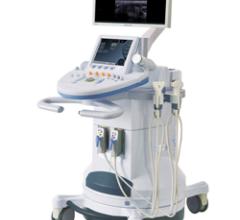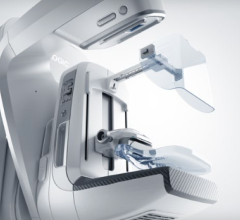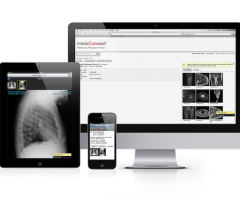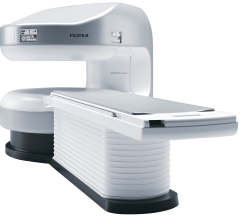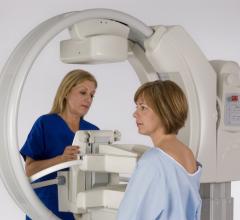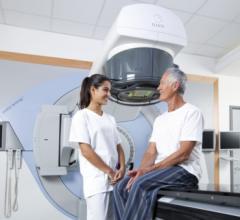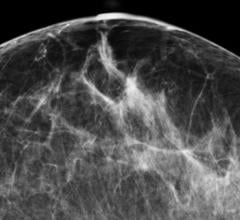October 11, 2012 — Tranzbyte Corp. signed a preliminary agreement to acquire the North and South American marketing rights to one of the world's least expensive and most practical magnetic resonance imaging (MRI) machines, the Cirrus MRI from Hurricane Enterprises Ltd., a Hong Kong company.
October 11, 2012 — SuperSonic Imagine announced it has received U.S. Food and Drug Administration (FDA) clearance for the addition of a real-time, adjustable numerical scale (ANS) in meters per second for ShearWave Elastography (SWE) on the Aixplorer.
October 11, 2012 — In a new report from Sectra, 150 neurologists, neurosurgeons, urologists, orthopedists, internists and general surgeons reveal what radiology needs to focus on in order to provide quality service to referring physicians.
While most women understand the importance of health screenings, an estimated 72 million have missed or postponed a ...
October 10, 2012 — At RSNA 2012, Philips Healthcare says it will unveil its work-in-progress IntelliSpace PACS (picture archiving and communication system) Anywhere system, being designed with high platform independence, mobility device compatibility and freedom from required installation of additional software.
October 10, 2012 — Intelerad Medical Systems announced the release of InteleConnect 4.4.1, a new version of its referring physician portal. Recognized for its intuitive navigation and functionality, InteleConnect 4.4.1 delivers high-quality medical imaging reports and images, with enhanced communication and self-service functionality to improve efficiency.

SPONSORED CONTENT — Fujifilm’s latest CT technology brings exceptional image quality to a compact and user- and patient ...
October 10, 2012 — At the opening of the 2012 Congress of Neurological Surgeons (CNS) annual meeting in Chicago, Elekta and Brainlab announced a collaboration that will enable neurosurgeons and radiation oncologists to use Brainlab's iPlan software together with Elekta's Leksell GammaPlan treatment planning for Gamma Knife radiosurgery.
Fujifilm’s APERTO Lucent is a 0.4T mid-field, open MRI system addressing today’s capability and image quality needs ...
October 10, 2012 — El Camino Hospital announced it is the first facility in the San Francisco Bay Area to adopt Volpara breast density measurement software from Matakina Intl. The hospital’s breast health center is among the latest California breast imaging facilities that have adopted the objective breast density assessment tool designed to improve early detection among women with dense breasts, including Sutter Health Foundation Women’s Center in Santa Rosa and North Valley Breast Clinic in Redding.
October 8, 2012 — In a paper published in Nature Medicine, a team from the University of Michigan Medical School reports on a technique called parametric response mapping, or PRM. The technique was used to analyze computed tomography (CT) scans of the lungs of patients with chronic obstructive pulmonary disease (COPD) who took part in the national COPDGene study funded by the National Heart, Lung and Blood Institute.
October 8, 2012 — Zonare Medical Systems announced the introduction of its new ZS3 premium ultrasound system. The ZS3 expands the company’s family of Zone Sonography Technology (ZST) systems. The platform provides expanded penetration for greater diagnostic capabilities.
SPONSORED CONTENT — Fujifilm’s latest CT technology brings exceptional image quality to a compact and user- and patient ...
October 8, 2012 — Simbionix USA Corp. will introduce the new advanced U/S (ultrasound) Mentor simulator at the upcoming American College of Emergency Physicians (ACEP) Exhibition in Denver, Colo. This new Simbionix simulator offers realistic hands-on training for diverse ultrasound examinations and interventions.
October 5, 2012 — Judge Victoria Kaufman of the U.S. Bankruptcy Court for the Central District of California (San Fernando Valley Division) approved Gamma Medica Inc.’s $1.5 million debtor-in-possession (DIP) financing on a final basis on Oct. 3 as part of its Chapter 11 restructuring. This DIP financing order provides the molecular breast imaging (MBI) manufacturer with sufficient financing to pursue a reorganization or asset sale.
October 5, 2012 — Clear Image Devices LLC (CiD) has announced the release of its newest product, the Extra-Wide 2-Step Platform for weight-bearing lateral X-rays of the feet, ankle and lower leg.
SPONSORED CONTENT — EnsightTM 2.0 is the newest version of Enlitic’s data standardization software framework. Ensight is ...
Imagine a place where doctors can tell patients in advance if cancer treatment will work for them, without going through an entire course of chemotherapy.
Advocate Health Care, one of the nation's top health systems and the largest integrated health care system in the state of Illinois, and GE Healthcare, a national leader in low dose, high performance imaging, announced a joint effort to help further reduce radiation dose in computed tomography (CT). The goal is to optimize care for patients needing imaging procedures and reduce radiation where possible without adversely impacting image quality. It’s one of the first announcements of the GE Blueprint for low dose, a comprehensive campaign in which GE Healthcare is working alongside leading U.S. health systems to further reduce radiation dose in CT imaging. Leaders from Advocate and GE Healthcare unveiled the Advocate-based GE Blueprint for low dose today during an event at Advocate Lutheran General Hospital.
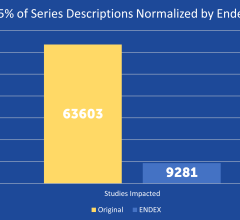
SPONSORED CONTENT — EnsightTM 2.0 is the newest version of Enlitic’s data standardization software framework. Ensight is ...
October 4, 2012 — Less than three months after beginning clinical use of their Elekta Agility 160-leaf multi-leaf collimator (MLC), physicians at The James Cook University Hospital in Middlesbrough, England, have achieved another benchmark – their first use of Agility to deliver radiation therapy employing Elekta's volumetric modulated arc therapy (VMAT).
October 4, 2012 — New research from the Netherlands shows that the switch from screen film mammography (SFM) to digital mammography (DM) in large, population-based breast cancer screening programs improves the detection of life-threatening cancer without significantly increasing detection of clinically insignificant disease. Results of the study are published online in the journal Radiology.
October 3, 2012 — According to an article in the October issue of the Journal of the American College of Radiology, radiologists at Emory University Hospital, in Atlanta, and Georgia Health Sciences University, in Augusta, Ga., have developed evidence-based guidelines to assist physicians with the process of managing patients with acute low back pain. Low back pain is one of the most common reasons for visits to physicians in the outpatient setting.
Regular mammography screening can help narrow the breast cancer gap between black and white women, according to a retrospective study published in Breast Cancer Research and Treatment in August.
The National Institutes of Health/National Cancer Institute (NCI) has awarded a five-year research project grant (R01) to identify harmonized reconstruction parameters for each currently-produced positron emission tomography (PET)/computed tomography (CT) scanner for use in clinical trials. The Society of Nuclear Medicine and Molecular Imaging’s (SNMMI) Clinical Trials Network (CTN) will serve as an administrative coordinating body for the Image Reconstruction Harmonization Grant, which was awarded in August to the Universities of Iowa, Pennsylvania, and Washington.
Riverain Technologies, an industry leader and innovator in proprietary image processing and machine learning technologies, announced that the United States Patent and Trademark Office (USPTO) has awarded the company broad patents for its technologies, opening the door for the company’s software to be used in wider healthcare applications and in other industries. These two new patents not only protect Riverain’s novel chest X-ray technology, which suppresses bone and calls out suspicious tissue, but also hold enormous promise for the company to bring its breakthrough software to other medical applications, including; computed tomography (CT) scans, magnetic resonance imaging (MRI) and ultrasound.

 October 11, 2012
October 11, 2012 
